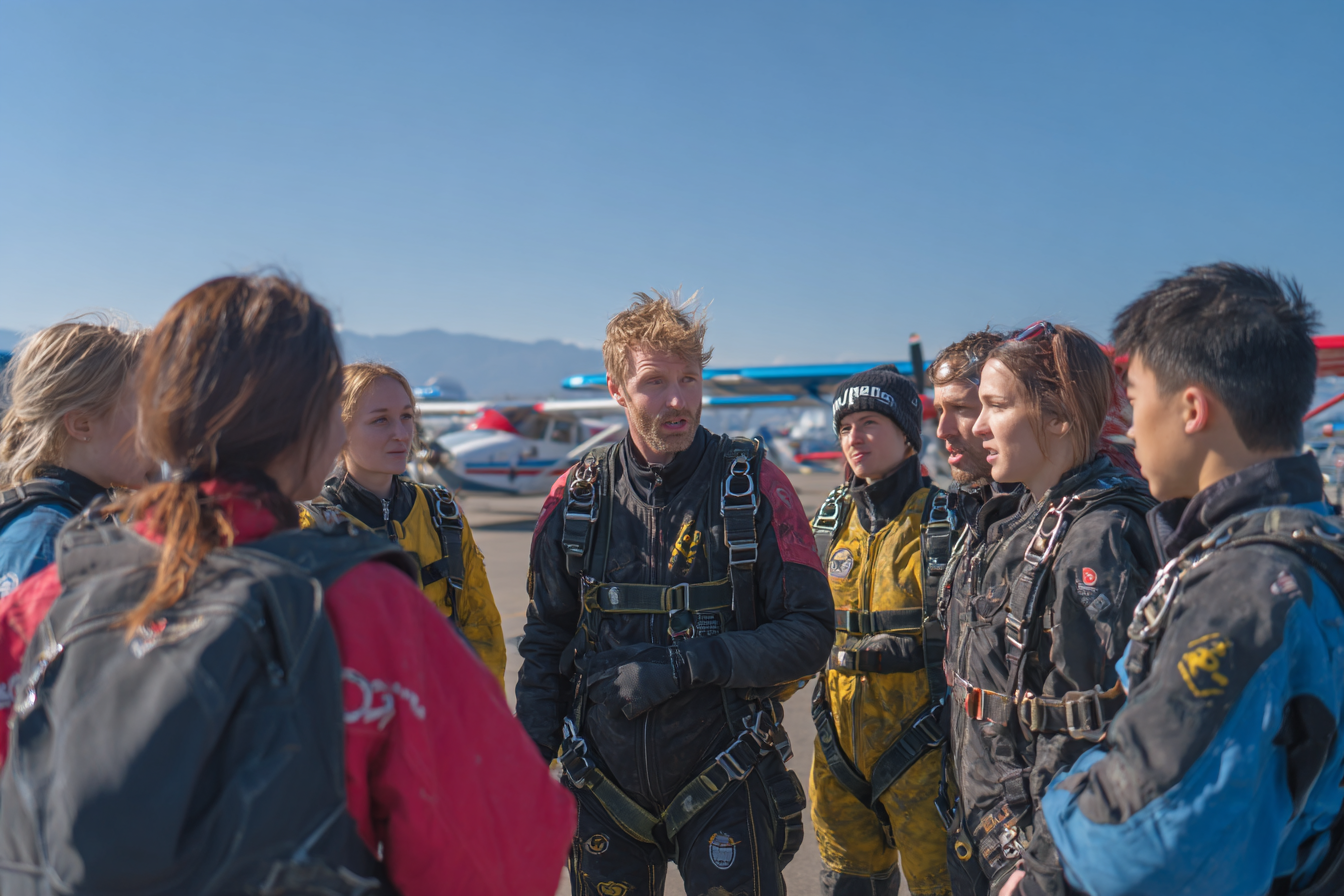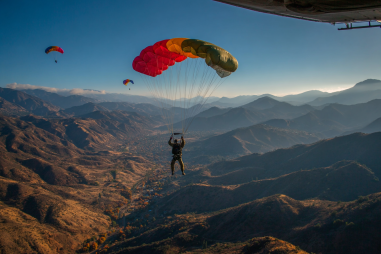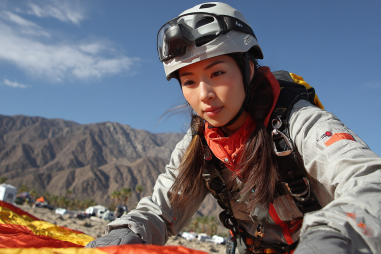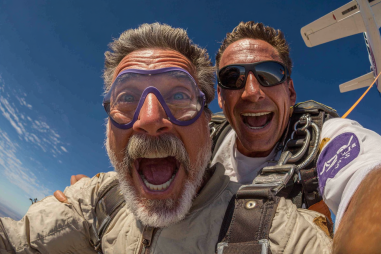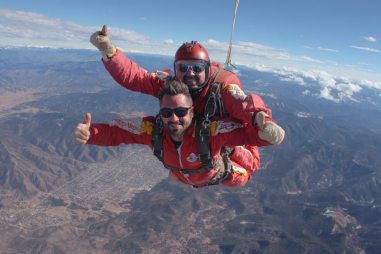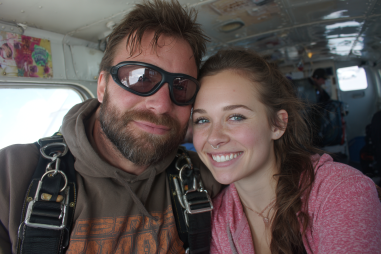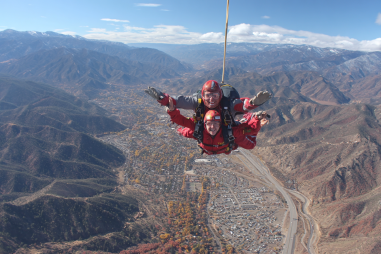Embarking on a skydiving journey is exhilarating, but it all starts with proper training tailored to your skill level and goals. Whether you’re stepping out of the plane for the first time or looking to refine advanced techniques, understanding the types of skydiving training programs available is essential. From basic tandem skydives that introduce you to the thrill, to comprehensive Accelerated Freefall courses designed for solo skydivers, each training method prepares you for safe and enjoyable flights. Let’s explore the diverse training options that cater to beginners and seasoned jumpers alike.
Tandem Jump Training: Introduction for Beginners
For most beginners, the skydiving experience begins with a tandem jump. This is the most accessible and straightforward way to skydive, where you are securely harnessed to an experienced instructor who controls the entire jump—from exit to parachute deployment and landing. Tandem training typically involves a brief classroom session before the skydive, covering essential safety information, body position during freefall, and landing procedures.
This method requires minimal preparation time and no prior knowledge, making it ideal for those looking to experience the thrill without extensive training commitments. Tandem jumps build confidence and often serve as a stepping stone for individuals interested in pursuing more advanced training later.
Static Line Training Explained
Static line training is another entry-level method that introduces the student to solo skydiving while retaining an element of safety and control. In this system, the parachute is deployed automatically by a static line connected to the aircraft. After exiting the plane, the line pulls the parachute out without the jumper having to manually deploy it, allowing students to focus on body position and canopy control.
This method is widely used in military training as well as some civilian skydiving schools. While it provides more independence than tandem training, students still benefit from a controlled environment where the main chute opens immediately after exit, reducing the risk associated with delayed deployments.
Accelerated Freefall (AFF): Full Training Overview
The Accelerated Freefall (AFF) program is the most popular training method for those serious about becoming licensed skydivers. Unlike tandem or static line training, AFF students jump from the outset with two qualified instructors holding on to them during freefall, providing in-air assistance and guidance. This puts the student in control from the beginning, including the responsibility to deploy their own parachute.
AFF training includes comprehensive ground school lessons, covering everything from equipment use to freefall body positioning, emergency procedures, canopy flight, and landing techniques. The course is spread over several jumps, gradually loosening instructor involvement as the student gains skills and confidence.
Because AFF is a fast-track to solo skydiving, it’s ideal for individuals ready to immerse themselves fully and earn their skydiving license in a relatively short amount of time. The program emphasizes safety through repetition and immediate instructor feedback.
Coach-Assisted Deployments (CAD)
Coach-Assisted Deployments (CAD) provide an intermediate training approach between static line and full AFF programs. In a CAD jump, the instructor exits first and deploys the student’s parachute on their behalf. The student experiences the freefall but doesn’t have to worry about deploying their own parachute initially.
This method gives jumpers more freefall experience while maintaining a safety net during the critical parachute deployment phase. It’s particularly helpful for jumpers who want to gain more control over their body in freefall but aren’t quite ready to handle all aspects solo. CAD often serves as an alternative for those who find AFF too fast-paced or expensive.
Advanced Training for Experienced Skydivers
Once you’ve got your basic license and experience, skydiving training opens up a wide range of advanced disciplines to elevate your skills. These courses focus on building expertise in areas like:
- Relative work (formation skydiving)
- Freefly (vertical and head-down flying)
- Wingsuit flying
- Canopy swooping and accuracy landing
- Coaching and instructor certification
Advanced training often involves mentorship from highly skilled coaches and may include video analysis, tailored drills, and specific fitness regimens. These courses emphasize precision, speed, and situational awareness to safely push the boundaries of the sport.
Safety Drills and Emergency Procedure Training
Regardless of your training level, safety is paramount in skydiving. All reputable training programs include thorough instruction on emergency protocols, which may cover:
- Cutaway and reserve chute deployment
- Handling malfunctions and midair emergencies
- Dealing with canopy collisions
- Landing safely in unexpected areas
- Using automatic activation devices (AADs)
Practicing these drills repeatedly on the ground and in the air ensures jumpers develop the muscle memory and calmness needed to respond effectively under pressure, reducing risk and enhancing overall safety.
Licensing and Certification Paths
Skydiving certifications are governed by organizations like the United States Parachute Association (USPA) or equivalent bodies worldwide. After completing training programs such as AFF, jumpers can earn licenses that allow them to skydive independently and access advanced training opportunities.
The typical licensing progression includes:
- A License: Allows solo jumps without instructor supervision after completing a minimum number of jumps and demonstrating competency in essential skills
- B License: Requires more jumps and advanced skills like night jumps and canopy piloting
- C & D Licenses: For highly experienced jumpers who often take on instructional or coaching roles
Licensing not only certifies your skill level but often provides access to greater insurance options and jump privileges at drop zones worldwide.
Choosing the Right Training for Your Skydiving Goals
Selecting a skydiving training program depends largely on your personal goals, budget, time commitment, and appetite for learning. Tandem jumps provide a fantastic first experience with low barriers to entry, while static line and CAD offer intermediate steps toward controlling more of the jump.
If gaining a full license and jumping solo early is your aim, the Accelerated Freefall program is the most efficient and thorough path. For those wanting to master specific styles like freefly or wingsuit, advanced courses are available once foundational skills are well established.
Above all, prioritize training programs that place a strong emphasis on safety, use certified instructors, and have a track record of successful student outcomes. Skydiving is an awe-inspiring sport, and the right training will ensure you enjoy the thrill with confidence for years to come.

